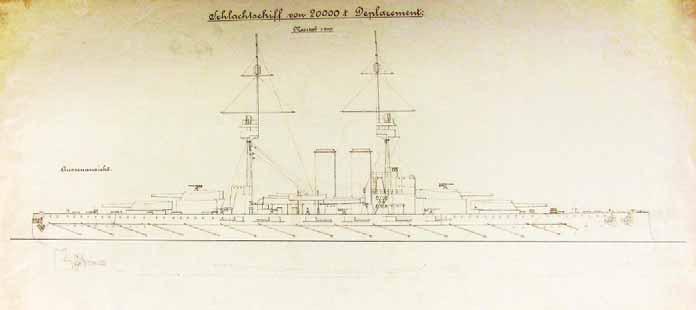Turkey was very important for the Germans and when the ill-fated Dardanelles campaign began in February 1915, they urged Haus to help the Turks. The Dardanelles project was the brainchild of Winston Churchill, then First Lord of the Admiralty. Frustrated by the stalemate on the Western Front, he advocated an attack on the “soft underbelly” of the enemy. After considering Schleswig or the Adriatic finally the Dardanelles were chosen. The unsuccessful attempt to storm the Turkish straits led only to the fall of Churchill as First Lord of the Admiralty and the reactivated Sir John Fisher as First Sea Lord. Through mid-March, before the failure of the British became obvious, the Germans put a great pressure on Haus to do something. Among other demands the Germans suggested an attack on the French forces at the mouth of the Adriatic. Even after the Turkish position stabilized some politicians of the Dual Monarchy and the Germans continued urging Haus to attack the French. Count István Burián, common Foreign Minister argued that a naval victory over the French would deter Italy from entering the war. Desperate to secure the Italian neutrality, Burián did not realize the unreality of such a demand and the high chances that an action against the French fleet would rather push Italy towards the Entente.447 The German embassy in Vienna also tried to put pressure on Haus, employing even Baron Max von Beck, former prime minister of Austria as an emissary. On 31 March, Haus wrote a lengthy letter called as the Haus Memorandum to Baron Beck in which he explained and defended his policy.448 Haus repeated his earlier argument about the limited achievements of the French in the Adriatic. He pointed out that the French were content with blocking the entrance of the Adriatic, and since neither the French nor the Austro-Hungarian fleet had a goal important enough to risk their destruction in a battle, that strategy of patient waiting is the sole rational one. Haus wrote: “To attack a superior fleet under these circumstances, when one does not know where to find it and how large their superiority is an unreasonable demand”. He complained: “It is difficult to make clear to many men that in many cases not to do anything is the only correct thing.” He pointed out that actions like Coronel, Falkland Islands and Heligoland had resulted in the defeat of the materially weaker squadron. Haus concluded that if one can draw lessons
from this, it is certainly not that the Austro-Hungarian fleet, which was much weaker, should increase the activity of its battleships. The old Emperor and Archduke Friedrich, titular head of the AOK agreed with Haus’s arguments.449 On the night of 26-27 April, the Austro-Hungarian Navy achieved its greatest success against the French. During the diplomatic negotiations between the Triple Entente and Italy, Lapeyrère extended to farther north the course of the French cruiser patrols. This decision proved to be disastrous. The Austro-Hungarian submarine U 5 commanded by the future submarine ace Linienschiffsleutnant Georg Ritter von Trapp torpedoed and sank the French armored cruiser Léon Gambetta off Cape Santa Maria di Leuca on the Ionian Sea. The cruiser went down in only nine minutes with 574 hands. The sinking of the Léon Gambetta marked the end of the “French War” as Lapeyrère withdrew all his heavier units south to Cephalonia. Due to this decision and other circumstances the French blockade of the mouth of the Adriatic practically ended in May 1915. In the remainder of the war the French sent against the Austro-Hungarian Navy only submarines and destroyers. A couple of hours before the U 5 sank the Léon Gambetta on 26 April the Treaty of London between the Triple Entente and Italy was signed. Signing the treaty Italy committed itself to declare war on Austria-Hungary and Germany within one month. On 23 May a new phase of the Adriatic naval war has begun: the so called “Italian War”. The Eve of the “Italian War” The Triple Alliance was never popular among the population of Italy. The country’s archenemy was the Dual Monarchy, the mysterious and menacing “Regno del Nord” of Dino Buzzati.450 Most of the disputed territories claimed by the Italians, fueled by Italia irredenta, were part of the Habsburg Empire, so not surprisingly the Central Powers could offer little during the diplomatic bargaining that took place after the outbreak of the war. Over the winter of 1914-1915, Italian Foreign Minister Sydney Sonnino negotiated with both sides in an effort to secure the best deal for Italy in exchange for its entering in the war. Germany pressured the Monarchy to appease the Italians, but this was a very
— 129 —






























